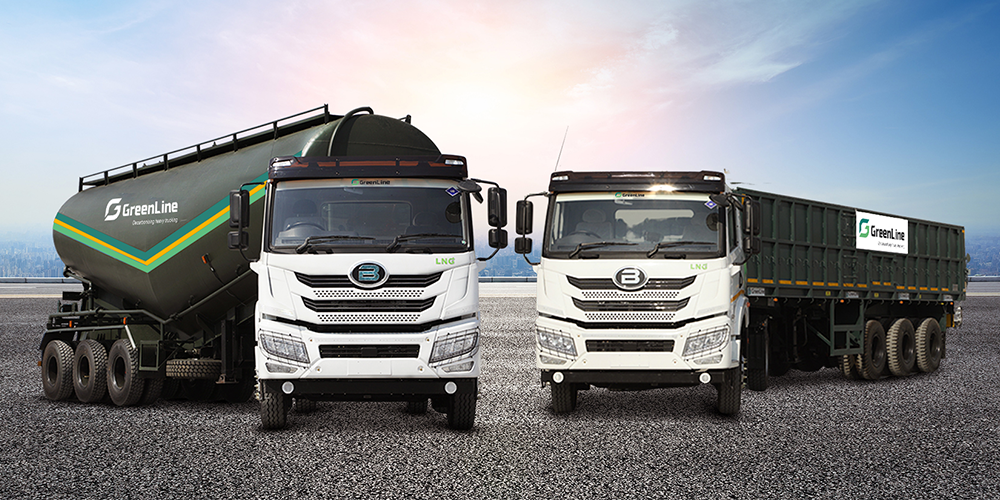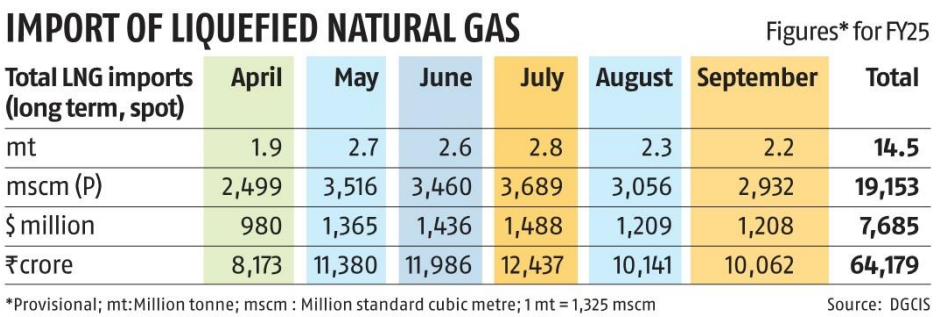
As India presents its credentials at the 29th edition of the United Nations Climate Conference (COP29) in Baku, Azerbaijan, this week, its heavy-duty transport sector, the biggest source of emissions in transportation, will be top of the mind for many who are looking for a shift from diesel to liquefied natural gas, or LNG, fuelling the country’s march towards Net Zero by 2070.
The idea is not new. State-run Petronet LNG, India’s biggest LNG importer, has harboured plans of using the fuel in the transport sector for the past six years. But lack of government incentives and resistance from small transporters meant that though Petronet had planned 1,000 LNG retail outlets in three years, it ended up establishing only a couple.
What has changed now is the entry of the private sector and an acceptance among India’s large corporations that their emissions need to be in order before government regulations come calling. The result is that from Gautam Adani to Prashant Ruia, and from heads of India’s top state-run oil and gas companies to top city gas utilities, everyone is betting on turning India’s goods transport by road green. Not by electrifying the trucks but by replacing diesel with the cleaner and more affordable LNG.
The business case is humongous if you look at the success of gas-fired heavy vehicles in China, where rough estimates value the LNG needed for these vehicles at $9 billion annually. A million trucks are expected to be on China’s roads next year — worth $70 billion at Indian ticket prices.
But India’s LNG trucks’ path is strewn with rocks, namely, poor infrastructure, high vehicle prices, lack of government support, and a highly fragmented market dominated by small transporters.

Private sector drive
The impetus for LNG-fired trucking in India has come from the Essar group, which has reshaped itself as a group focused on energy transition and future fuels. LNG came into the mix after Essar realised the fuel could help decarbonise transport, says Anand Mimani, CEO of Mumbai-based clean logistics provider GreenLine Enterprises, an Essar company.
Says Anirudh Bhuwalka, CEO of Blue Energy, which has a capacity to make 10,000 heavy duty LNG trucks and counts GreenLine as an anchor customer. “Clearly, there was an opportunity to participate in this whole energy transition story in the sector. And nobody really was focusing on it, and nobody was doing anything about it.’’
GreenLine says it operates most of the 1,500 LNG trucks in India today, still a fraction of the 300,000 medium and heavy diesel trucks sold annually.
That could change. Tata Motors, Volvo, and Ashok Leyland are entering the LNG truck business. So is Adani, which commissioned its first LNG station in Tirupur, the textile hub in Tamil Nadu, with plans to build 50 LNG retail outlets over the next three to five years, Suresh Manglani, CEO, Adani Total Gas, has said in an earnings call.
State-run Indraprastha Gas will set up 100 LNG stations by 2029-30, managing director Kamal Kishore Chatiwal told Business Standard earlier.
However, unlike the others, which are either into fuel retailing or truck building, Essar is trying to build an entire ecosystem around LNG trucking, says Raunak Modi, logistics analyst with rating agency CareEdge.
GreenLine buys the trucks from Blue Energy, an Essar associate company, and provides clean logistics support to companies like Vedanta, Tata Steel, Jindal Steel, Ultratech, Hindalco, Reliance, Shell, Nestle, and Castrol.
Rocks on the path
LNG-powered trucks deliver considerable reductions in toxic emissions compared to diesel, with cuts of up to 30 per cent in CO2, up to 100 per cent in SOx, up to 59 per cent in NOx, up to 91 per cent in particulate matter, and up to 70 per cent in carbon monoxide.
“Capacity is not the issue. Products are now ready. I think the bottleneck so far has been
the network creation for LNG stations,’’ Bhuwalka said.
There are hardly 20 outlets scattered across the country, compared to the 90,000-odd diesel outlets. This, says Modi, prevents bulk users such as ecommerce companies Amazon or Delhivery from using LNG vehicles. China has 8,000 LNG retail fuel stations.
LNG retail outlets are several fold more expensive to set up compared to a pump selling petrol or diesel. Industry sources say India requires either strict emission rules on diesel trucks or generous government subsidies on LNG ones. The latter is awaited even as the government supports electric two-wheelers.
Beijing incentivised adoption of LNG trucks. It began conversions in 2015, with its LNG truck fleet almost tripling since 2019 and on track to reach 1 million next year, says Greg Molnar, LNG analyst at Paris-based International Energy Agency.
As in India, LNG truck sales compete with diesel vehicles in China on price. While operating costs of LNG fired vehicles are lower than diesel powered ones in both nations, the difference lies in capital costs. Advantages of a lower operating cost are nullified by the high capital costs of the trucks, and the high cost of setting up an LNG retail outlet.
A LNG-fired truck is more expensive than a diesel-fired equivalent by Rs 20-25 lakh, a
steep climb for most of India’s truckers. This gap is half in China.
“I think capital cost definitely is a major concern. You know, the transport industry is very reluctant to try on new technologies in a hurry,’’ says Bhuwalka, “and especially when those new technologies come at a high price point.’’
India’s dream of increasing the share of gas in its energy mix to 15 per cent by 2030 from 6 per cent now will be a steep climb unless the government creates an entirely new demand sector in retail LNG, analysts say.
But LNG has to be priced competitively or demand from trucks may evaporate, especially in a price sensitive market such as India.
“Whilst all cylinders are firing to celebrate the growth of China’s LNG fuelled trucks, how many remember that China used to have a huge fleet of LNG fuelled buses which have disappeared, gone electric by now?’’ Yiyong He, CEO of LNG Easy, a fuel retailer, said in a post on LinkedIn.
Modi of CareEdge says: “Overall, you know, larger scale adoption, I think it is sort of a matter of time right now. We do not really see it happening anytime very, very soon.”
